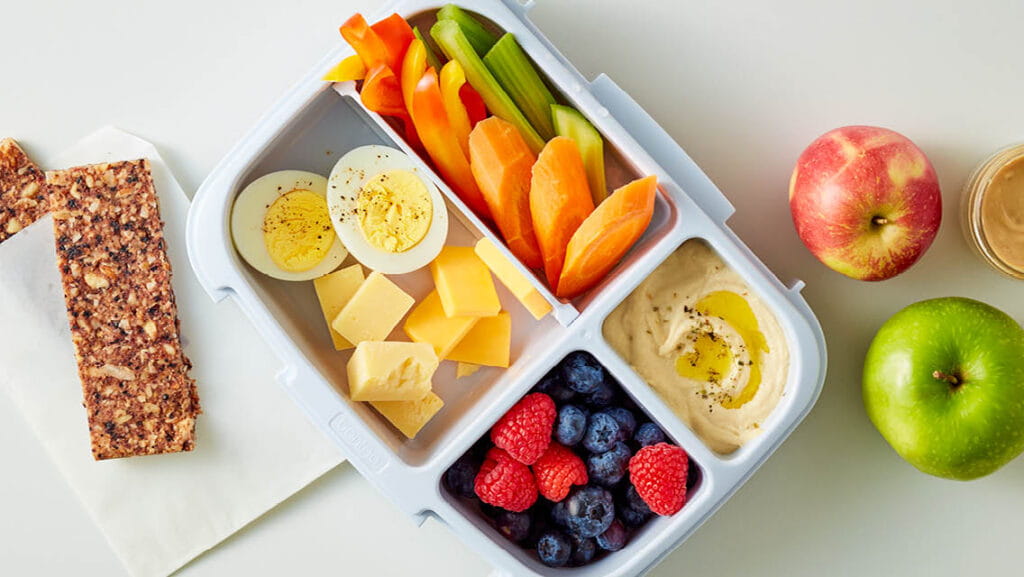We use cookies to improve your online experiences. To learn more and choose your cookies options, please refer to our cookie policy.

When we hear the term snack, we usually think of something high in sugar and fat, such as chocolate, sweet biscuits, crisps or ice cream. However, snacks do not necessarily have to contain these food groups, as they are not recommended to be consumed daily but only once or twice a week.
Snacks can also be healthy, making them an excellent addition to our daily meals, as the most commonly recommended meal frequency is five meals a day. Thus, the three main meals should be supplemented by two smaller ones. Snacks help balance our daily eating rhythm, squeeze more vegetables and fruit into our meals and help us maintain the proper energy levels throughout the day for our various tasks and learning. But it's also essential to have the right energy and nutrient intake before and after sporting activities to ensure that we perform at our best.
Developing healthy eating habits should also start at an early age, both at home and at school.
That's why we provide two snacks and a main meal for our students up to the second grade. All the snacks we offer our students include vegetables and possibly fruit. As they are free to choose their fruit at lunchtime, we mainly promote the consumption of vegetables when planning the snack. In addition, we make sure that the bakery products they receive are made from wholemeal or bran flour wherever possible. Meals and snacks do not necessarily need to contain a source of protein, but we often supplement these meals with yoghurt, cheese and milk to help ensure adequate calcium intake, which is essential for proper bone mass.
Nowadays, eating five meals a day is often difficult, as we don't necessarily have the opportunity to prepare everything fresh during the day or carry products that need refrigeration in our bags on summer days. However, there are still ways to overcome these obstacles. For example, we can easily carry fruit, but the same goes for wholemeal biscuits, puffed cereals, oilseeds and seed mixes. These are always good to have lurking in your bags.
And if you're in the middle of shopping, there are many places where you can buy pre-made fruit cups, green salads, hummus with vegetable chunks, or even a healthy smoothie.
And how do we serve them in school?
We give 50 grams of fruit per student. For fruit, the student's snack portion is 60-70 grams, for example, half an apple, a pear, a small mandrake, a tiny kiwi, and half a banana. For vegetables, 40-50 grams per student per snack. This is half of a large carrot, a quarter of a cucumber, a small tomato or 3-4 grains of cocktail tomatoes, and a large handful of lettuce. Cheese and cold cuts: 30-40 grams, the equivalent of two thin slices of cheese or cold cuts. Dairy products like plain yoghurt and milk are provided at 1.5 to 2 dl per student. And we give 50 grams per head of bread. That'sroughly half a woman's palm-sized piece of bread, about the thickness of a finger.
Finally, I've also included a link to help you choose healthier alternatives not only for snacks but also for the rest of your meals: